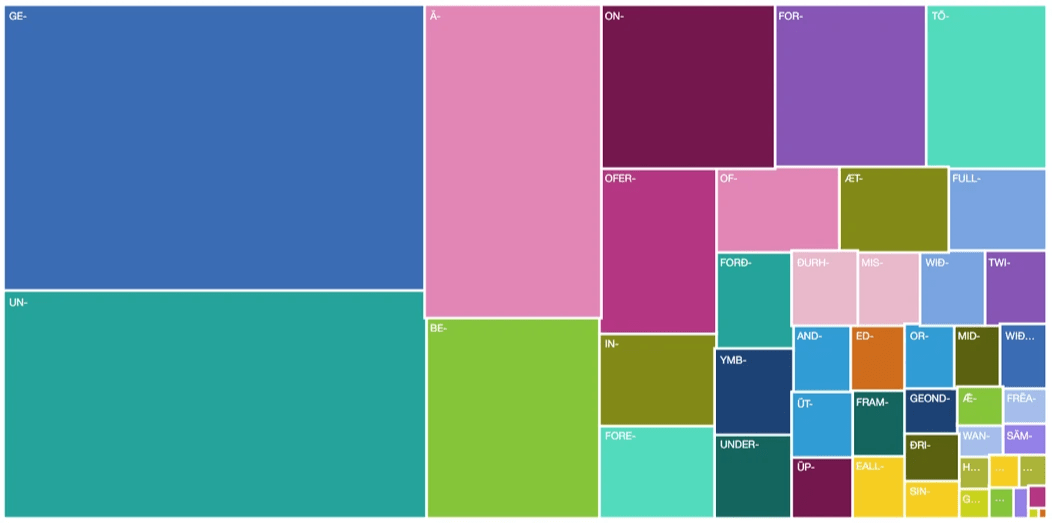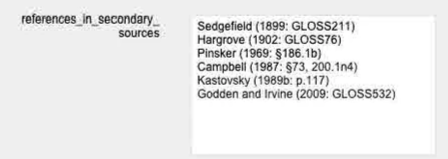
- Nerthusv5 database
- …
- Nerthusv5 database
- Nerthusv5 database
- …
- Nerthusv5 database
Nerthusv5: Database description
The fifth version of the Nerthus database hasbeen designed as an interface of textual (corpus) and lexicographical (dictionary) sources of Old English. Through the interface, the attested canonical inflectional forms of headwords can be related to the headwords and
the meaning definitions of three complete dictionaries of the language of the Anglo-Saxons. For the segment A-I, the corresponding headword in the DOE is also available. The analysis of derivational morphology has been simplified, to include morphological status, base of derivation, and category, while derivatives have been classified on the basis of the corresponding lexical primes. Secondary
sources, understood as studies in Old English from a variety of theoretical and descriptive perspectives, have also been indexed. In its current state, Nerthusv5 contains 32,812 headword files. As in previous releases of the database, headword spelling is largely guided by the Clark-Hall Dictionary. Nerthusv5 is comprised of six blocks of information.
Headword
Three versions of the headword are provided, namely simplex, alphabetical and numbered. The simplex headword is a simplified form that ignores the prefix ge-. The alphabetical headword is the standard form, while the numbered headword makes further distinctions with respect to the alphabetical headword based on contrasts of homography and alternative spellings.

Meaning definition
Four meaning definitions are offered. Three ofthem are are based on the dictionaries by Sweet, Clark Hall and Bosworth-Toller. A synthetic definition is also given. The corresponding headwords in the four major dictionaries of Old English can be consulted, with their original spelling and format.

Part of speech
The information on part of speech compriseslexical category and inflectional class.

Attested forms
Four versions of inflection can be consulted onthe database, including the inflectional forms listed in the Bosworth-Toller dictionary, the inflections provided by secondary sources, the inflections drawn from An open access annotated parallel corpus Old English-English(ParCorOEv3) and the automatically generated canonical forms that are attested in the DOEC.

Derivational morphology
Derivational morphology is presented bothsyntagmatically and paradigmatically. Derivatives are shown together with their bases of derivation, the category of the base, and the relevant affix. Word-families are described as derivational paradigms revolving around a lexical prime, which may hold a long-distance morphological relationship with its derivatives. All non-basic words are classified as to the derivational process that produces them (affixation, zero derivation, or affixless derivation, and compounding).

Citations from ParCorOEv3
A citation from ParCorv3 has been selected foreach headword file. It shows the token number of the reference form, the fragment where the token appears, its translation into English and the references of the source text and translation.

References in secondary sources
The references of the citation of the headwordin question are listed from an extensive indexing of the secondary sources of Old English, including grammars, primers, glossaries, theoretical studies,
dictionaries of old Germanic languages, studies in specialised vocabulary, (see https://www.nerthusproject.com/references).

About us
RGFGs, Nerthus Project
Department of Modern Languages, University of
La Rioja.
Nerthus Project - Universidad de La Rioja © 2024








